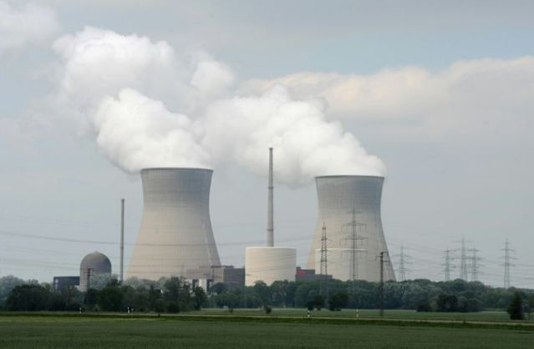
GUNDREMMINGEN (Germany), March 6 (NNN-AGENCIES) — The Bavarian village of Gundremmingen is so proud of its nuclear power station that its coat of arms is graced with a giant golden atom.
But change is coming to the village, with the plant facing imminent closure
under Germany’s energy transition policy.
Former village mayor Wolfgang Mayer’s house has direct views of the
imposing complex with its two 160-metre cooling towers — taller than the
spires of Cologne Cathedral.
The plant still produces 10 billion kWh of power per year, though parts of
it have already been shut down — enough to provide the entire Munich
metropolitan region with electricity.
The power station will be decommissioned on Dec 31, 2021, along with
two other facilities in northern Germany.
By the end of 2022, Germany will have achieved its goal of completely
phasing out nuclear power, set by Chancellor Angela Merkel on May 30, 2011, in the wake of the Fukushima disaster.
The plan represented a dramatic change of course by Merkel’s ruling
conservatives, who just a few months earlier had agreed to extend the
lifespan of Germany’s oldest power stations.
But it was met with widespread public support in a country with a powerful
anti-nuclear movement, fuelled first by fears of a Cold War conflict and then by disasters such as Chernobyl.
The declining importance of nuclear power (12.5 percent in 2020) “has been
compensated for by the expansion of renewable energies”, Claudia Kemfert, an energy expert at the DIW economic research institute, said.
Nuclear power stations have therefore not been replaced by coal, though the fossil fuel does still represent almost a quarter of the electricity mix.
In fact, the phase-out of nuclear energy has been joined by another plan,
announced in 2019, to close all of Germany’s coal-fired power stations by
2038.
This presents a particular challenge for Germany, which remains the world’s leading producer of lignite.
Mining for the brown coal, which is highly polluting, continues to lead to
the destruction of villages in the west of the country in order to expand
huge open-cast mines.
If Germany is to free itself from lignite, renewables such as wind, solar,
biomass and hydropower will have to make up 65 percent of the energy mix by 2030.
Yet the country, which has long been at the forefront of wind energy in
Europe, installed only 1.65 gigawatts (GW) of wind farms last year — the
lowest level in a decade, according to the WindEurope advocacy group.
To meet the government’s targets, Germany would have to add 9.8 GW of solar and 5.9 GW of onshore wind annually, according to Kemfert.
But the development of new areas for wind or photovoltaic energy production is complex, with plans often coming up against resistance from local residents and the risk of damage to the landscape.
To secure its energy supply, Germany could therefore be tempted to build more gas-fired power stations.
But this would risk reinforcing its dependence on Russia, as illustrated by
the controversy surrounding the construction of the Nord Stream 2 gas
pipeline.
A gas-fired power station is already in the works for the town of Leipheim,
just around the corner from Gundremmingen. — NNN-AGENCIES






